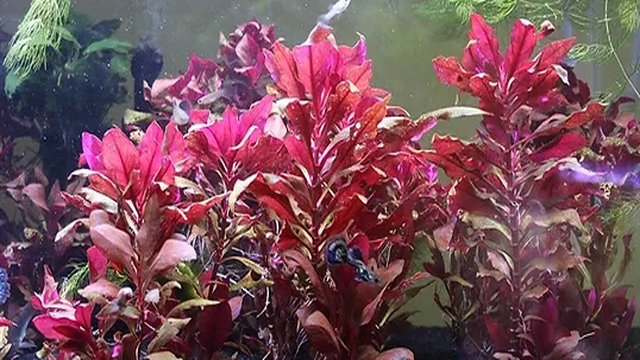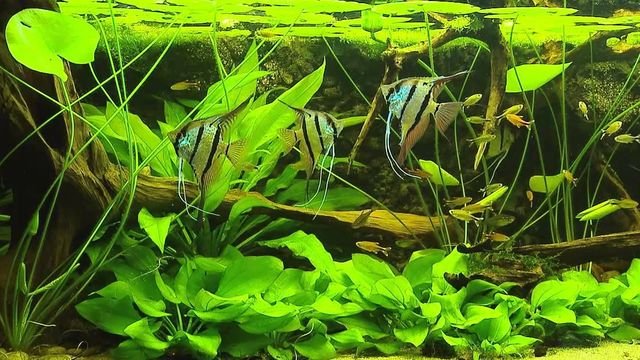How To Propagate Aquarium Plants
I’m here to share with you my secrets on how to successfully propagate aquarium plants. Get ready for a thrilling journey as we dive deep into the world of aquascaping.
In this article, I will guide you through the process of selecting healthy parent plants, understanding different propagation methods, and preparing the perfect aquatic environment. Brace yourself for the excitement of propagating aquarium plants through stem cuttings and division.
Together, we will ensure the well-being of your newly propagated plants. Let’s get started!
Key Takeaways
- Choosing suitable substrates and providing adequate lighting are important for healthy parent plants.
- Understanding water parameters and using plant hormones can enhance the success of propagation methods.
- Preparing the aquatic environment with appropriate lighting and water conditions is crucial for plant propagation.
- Propagation can be done through stem cuttings or division, using specific techniques for different plants.
Selecting Healthy Parent Plants
To ensure successful propagation of aquarium plants, I always start by carefully selecting a few healthy parent plants. The first step is choosing suitable substrates that provide the necessary nutrients for the plants to thrive. I prefer using nutrient-rich substrates like gravel or aquatic soil, as they offer a stable base for the plants to root and grow.
Lighting is another crucial factor in plant propagation. Adequate lighting is essential for photosynthesis, which provides the plants with energy to grow and reproduce. I recommend using full-spectrum fluorescent or LED lights, as they mimic natural sunlight and promote healthy plant growth.
Understanding Different Propagation Methods
I use a variety of propagation methods to successfully propagate aquarium plants. Understanding these methods is crucial for ensuring the healthy growth of your aquatic plants. When it comes to propagating aquarium plants, water parameters play a vital role.
Maintaining the right water temperature, pH level, and nutrient levels is essential for the successful growth of new plants. Additionally, using plant hormones can provide several benefits in aquarium plant propagation.
Plant hormones, such as auxins and cytokinins, can stimulate root growth, enhance branching, and promote overall plant health. By incorporating these hormones into your propagation methods, you can significantly increase the success rate of propagating aquarium plants.
To further understand the importance of water parameters and the benefits of using plant hormones in aquarium plant propagation, refer to the table below:
| Water Parameters | Benefits of Plant Hormones |
|---|---|
| Temperature | Stimulates root growth |
| pH level | Enhances branching |
| Nutrient levels | Promotes overall plant health |
Preparing the Aquatic Environment
Maintaining optimal water conditions is crucial in preparing the aquatic environment for propagating aquarium plants. To ensure successful propagation, it’s important to set up the proper lighting and water conditions. Here are three key steps to consider:
- Lighting: Providing appropriate lighting is essential for the growth and development of aquarium plants. Choose a lighting system that emits the right spectrum of light, typically in the range of 6500K to 10000K, to support photosynthesis. This will promote healthy plant growth and prevent algae overgrowth.
- Water conditions: Maintaining the right water parameters is vital for the health of aquarium plants. Ensure that the water temperature, pH level, and hardness are suitable for the specific plant species you intend to propagate. Regular water testing and adjustments are necessary to create an ideal environment.
- Substrate selection: Choosing the right substrate for propagation is crucial. Opt for a nutrient-rich substrate that provides essential minerals and nutrients for plant growth. Consider using specialized plant substrates or adding fertilizers to enhance the growth potential of your plants.
Propagating Aquarium Plants by Stem Cuttings
To propagate aquarium plants by stem cuttings, I start by carefully selecting healthy stems from the parent plants. It’s important to choose stems that have a good amount of leaves and are free from any signs of disease or damage. Once I’ve selected the stems, I make a clean cut just below a node using a sharp pair of scissors or pruning shears. This node is where the roots will eventually grow from.
Next, I prepare a separate container filled with water that meets the ideal water parameters for successful plant propagation. The water should be clean, free from any pollutants, and have the right temperature and pH level for the specific plant species.
One common mistake to avoid when propagating aquarium plants is using water that’s too cold or too warm. Extreme temperatures can shock the plant and hinder root development. Another mistake isn’t providing enough light for the cuttings. Plants need adequate light to photosynthesize and grow. It’s also important to regularly monitor the water quality and make any necessary adjustments to ensure optimal conditions for the cuttings.
Propagating Aquarium Plants by Division
When propagating aquarium plants by division, a healthy plant with multiple shoots is carefully separated into smaller sections to create new individual plants. This method is particularly useful for plants that naturally produce multiple stems or runners.
Here are some tips for propagating aquarium plants by division:
- Use rooting hormone for faster propagation: Applying rooting hormone to the cut ends of the divided sections can encourage quicker root development and overall plant growth.
- Propagation tips for specific types of aquarium plants: Different plants may require specific techniques for successful division. For example, plants like Amazon sword (Echinodorus species) can be divided by gently pulling apart the rooted sections, while plants like Java fern (Microsorum pteropus) can be divided by carefully cutting the rhizome into smaller portions.
- Provide suitable growing conditions: After division, it’s important to provide the newly propagated plants with the appropriate lighting, water parameters, and nutrients to promote healthy growth and establishment.
Caring for Newly Propagated Plants
After propagating aquarium plants by division, I take special care to ensure the well-being of the newly propagated plants. One of the key aspects of caring for these plants is monitoring their growth.
I closely observe each plant for any signs of stunted growth or wilting. This allows me to quickly address any issues and provide the necessary adjustments in terms of lighting, fertilization, and water parameters.
Additionally, I’m vigilant in preventing algae growth, as it can hinder the growth of the newly propagated plants. To achieve this, I ensure proper water circulation and limit the duration of light exposure.
Frequently Asked Questions
How Often Should I Trim the Stem Cuttings of My Aquarium Plants?
I usually wait about two weeks before trimming the stem cuttings of my aquarium plants. This gives them enough time to establish roots. For successful propagation without using stem cuttings, you can try methods like division or rhizome separation.
Can I Propagate Aquarium Plants by Using Plantlets Instead of Stem Cuttings?
Yes, plantlets can be used for aquarium plant propagation. However, the success rates of stem cuttings are generally higher than plantlets due to their ability to develop stronger root systems.
What Are Some Common Signs of Unhealthy Parent Plants to Avoid for Propagation?
Avoid propagating from unhealthy parent plants. Signs to look out for include yellowing leaves, wilting, rotting roots, and pest infestations. These indicators can lead to unsuccessful propagation, so it’s crucial to choose healthy plants.
Is It Necessary to Use a Specialized Substrate When Preparing the Aquatic Environment for Propagating Aquarium Plants?
No, it’s not necessary to use a specialized substrate when preparing the aquatic environment for propagating aquarium plants. There are alternative substrates available that can provide the necessary nutrients and support for successful propagation. However, using a specialized substrate can offer additional benefits such as improved water circulation and root development.
How Long Should I Wait Before Moving Newly Propagated Plants to the Main Aquarium?
I typically wait at least two weeks before moving newly propagated plants to the main aquarium. This allows them time to establish their root systems and ensures a higher chance of survival in the new environment.
Conclusion
In conclusion, propagating aquarium plants is a rewarding and fascinating process that allows you to expand your plant collection and create a thriving aquatic environment.
While it may require some patience and careful attention to detail, the benefits of successfully propagating your own plants are well worth the effort.
So don’t be discouraged if you encounter any challenges along the way, as with proper care and knowledge, you can achieve beautiful and healthy plants in your aquarium.

